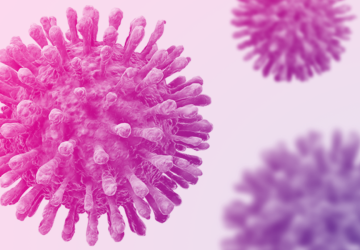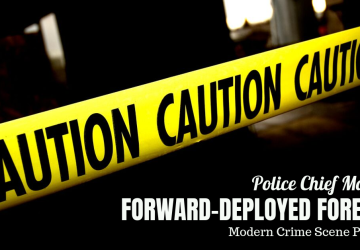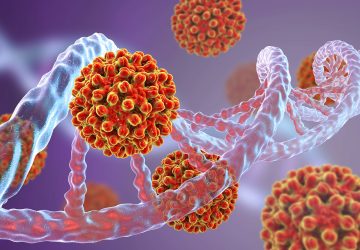Modern Crime Scene Processing
Max M. Houck
Crime scenes are the starting point for almost all investigations. The modern crime scene is a target-rich environment that grows richer by the day with the advancements of science and technology.
Crime scenes are the starting point for almost all investigations. The modern crime scene is a target-rich environment that grows richer by the day with the advancements of science and technology.
What was once science fiction is now science fact, and that boundary is being continuously explored and expanded. However, the classic concepts still apply, and the three Rs – recognize, recover, record – continue to be the bedrock of crime scene processing even in the digital age. Yet,howevidence is recognized, recovered, and recorded has changed significantly. These changes, including those from the last few years, can be grouped as “forward-deployed forensics,” meaning more science is being brought to bear at the scene, which provides for improved collection and storage and on-scene analysis and triage.
RECOGNIZE
Evidence that goes unrecognized also goes uncollected. Extending the human senses at a crime scene typically involves physical (light) or chemical methods to visualize evidence, such as fingerprints, blood traces, or other minute or latent materials. The most prevalent approach is to use an alternate light source (ALS), which causes certain materials to fluoresce, improving their visualization. In recent years, there has been a consistent improvement in ALS devices, including the use of LEDs instead of traditional light bulbs, more discrete filters to improve detection, and reduced battery size to provide lighter weight and longer use. ALS devices now range from small, single-wavelength handheld flashlights to small portable products with 16 or more wavelength capabilities.
Portable instrumental analysis is now a reality and has the real potential to displace older, less reliable methods. For example, on-scene presumptive testing for controlled substances currently uses color-based field tests. These test kits have little to no validation testing and have been discovered to produce false positives (disproved by laboratory testing) in numerous cases. For example, in Florida, 21 percent of drug evidence submitted to the Florida Department of Law Enforcement as positive for methamphetamine did not contain that drug, and half of the samples submitted contained no illegal drugs at all. While the kits are inexpensive (a few dollars each), the resulting retesting and possible lawsuits could negate their economy; in a recent case, a man was jailed because his donut glaze was incorrectly identified as methamphetamine by a $2 test kit, and he settled with the jurisdiction for $37,500. The total costs for that $2 kit, in addition to the settlement, include time spent analyzing the seized substances, investigating the mistake, and administrative time for the officer’s reprimand, among others. New technologies like portable instruments using infrared and Raman spectroscopy can provide more accurate and reliable identifications at the scene. Although portable instruments require an upfront financial investment, their ease of use, quick analysis, nondestructive testing, detection levels, and minimal false positives and negatives make them a better alternative to color-based field tests for on-scene analysis.
Portable spectrometers using Raman energy (a complementary energy to infrared) can also now differentiate between blood from humans and blood from other animal species. Using a portable spectrometer to identify and analyze bodily fluids can increase at-scene information while reducing the cost and time of analysis. Spectroscopy is essentially nondestructive and qualifies as a confirmatory test (as opposed to presumptive). Field portable instrumentation has the potential to revolutionize crime scene analysis and processing.
RECOVER
Not all samples can be analyzed at the scene; some must be recovered for later testing in a laboratory. Sample collection is critical because a crime scene investigator has one chance to collect evidence and must get it right the first time; a bell cannot be unrung and the same evidence cannot be collected twice. Additionally, with the concerns about post-conviction testing , wrongful convictions, and advancing techniques, recovered evidence samples must be secured for long-term storage, up to decades in some cases.
New collection materials offer the potential for ease of collection, security from contamination, and long-term room temperature storage. One example of an innovative sample collection technology is the HemaSpot-HF collection device, which is simple to use, robust to ship, and can be stored at ambient temperatures. The device locks when it is closed, can be labeled with a unique optical code for sample identification (reduces sample switching), and is ready to store or ship within minutes of collection, which – along with similar technologies – provides a more efficient and effective crime scene sample collection and can help speed up the overall path to justice. The petal-shaped collection material holds a precise volume of blood that allows for quantitative clinical or toxicological analysis, like analyzing for drugs, or each petal can be removed to share a sample across jurisdictional or scientific platforms, as for DNA analysis. A large format device, the HemaSpot-HD, allows for large-format sample collection of evidence like saliva or other bodily fluids. New devices like these are allowing forensic scientists the organization and efficiency required for a thorough, accurate investigation.
RECORD
As carpenters say, “Measure twice, cut once.” The same could be said for crime scenes except current technologies allow millions of measurements per second without having to cut even once. Laser scanners can capture scans, include high-dynamic range (HDR) imagery, in less than two minutes at distances of up to 270 meters. Resolution of the scans depends on distance, but, typically, the instruments are accurate from a few millimeters up to 100 meters. Multiple scans can be digitally stitched together to reproduce large-scale scenes, like vehicle crashes, or scaled scenes, like inside a vehicle and then a walkthrough around it. The processed scans can be shared between the field and office, creating walkthroughs that teams or task forces can review to ensure scenes are processed completely the first time.
Collecting large amounts of information at a crime scene will not help anyone if it is not properly organized. Interviews, physical evidence, record keeping, scene access, photographs, video, and so many more modalities are potential avenues to solve a case. CrimePad is one tablet-based application that collections all aspects of the scene, at any time, and in any order. The software can keep track of the access log, take notes, record evidence, collection, take camera and video images, document what techniques were used to collect evidence (like fingerprint visualization), make sketches, and link each of these items to create a relational database to better show how all the information fits together. The application allows for an unlimited number of scenes.
THE FUTURE OF CRIME SCENES
Increased technology at the crime scene typically means additional training for crime scene personnel. However, properly designed technology can allow for less training and more application, streamlining processes and employing checklists to ensure completeness. The science currently used at crime scenes and the enhanced methods that are coming soon mean that police, crime scene investigators, detectives, and their counterparts in the criminal justice system will need to understand more about how science works – and does not work – to produce better information and provide more transparent justice. The methodologies discussed herein are just a taste of the progress and improvements to come. Nevertheless, the basics still apply: recognize, recover, record. Technology and science can amplify and enhance these core principles, but cannot replace them.




